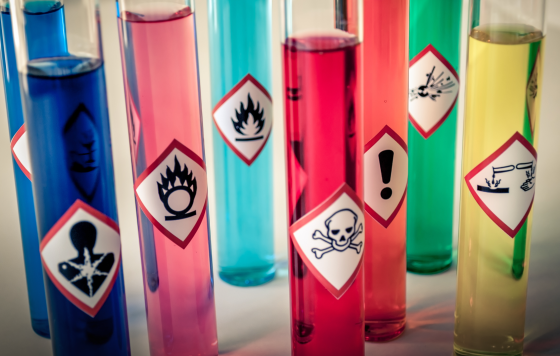
It’s summertime and I’m enjoying my work as a community organizer with Clean Water Action - every day we get to inspire people to get involved in our environmental programs and campaigns by going door to door and engaging with locals. As I walk through our neighborhoods, it’s hard not to notice the various flags indicating a pesticide treated lawn. We all want clean water and a healthy environment for our families, but may not realize the hidden dangers lurking in pesticide-treated lawns.
Clean Water Action helped pass New Jersey’s Right-to-Know law requiring these flags on pesticide treated lawns so that people could be warned about their toxicity. With lawns being the Garden State’s largest crop, people forget that pesticides are designed to kill and can be harmful to kids, pets and our waterways.
All pesticides are composed of ingredients that fall into two main categories: active and inert. Active ingredients are the ingredients specifically designed to destroy or discourage pests from an area. By definition, they are made to kill. Active ingredients are the only ingredients that the pesticides label actually contains, but many times there is no regulation in the name of these ingredients, which makes it difficult to know which are especially toxic. Many active ingredients appear in a range of products under different names.
By federal law, inert ingredients do not need to be listed on the label because companies consider those ingredients to be part of their special recipe. Inert ingredients can range from kerosene and propane to wintergreen and peanuts, though nothing guarantees that they are toxin free. According to a report by the New York State Attorney General in 2000, "72 percent of pesticide products available to consumers contain over 95 percent inert ingredients...and more than 200 chemicals used as inert ingredients are hazardous pollutants in federal environmental statutes governing air and water quality." Inert ingredients are dangers to consumers that we aren't even allowed to know about.
Various studies have shown that synthetic pesticides cause unwanted health effects on humans through unwashed food, polluted waters, and through the air when they are sprayed. Just as the chemical makeup of a pesticide is unknown, the effect it has on humans and how often humans accidentally consume them is sometimes unknown. These chemicals are designed to enter into cells and kill them from the inside out. As a reminder, insects and humans are both composed of animal cells, so it is nearly impossible for a chemical to distinguish between which cell it should and shouldn’t harm. What is especially concerning is that pesticide use can be dangerous for expecting mothers and newborns. It has been found that children are most susceptible to pesticide use due to their small body masses and limited exposure to these harsh chemicals. Young children who are exposed to pesticides run the risk of having endocrine development issues. Chlorpyrifos, a pesticide proven to cause brain problems in children, is one example of a pesticide the EPA has recently refused to ban, even after years of evidence showing its harm to children.
As pesticides are created for the purpose of killing “pests,” it should be no surprise that theyhave the ability to kill more than their targets. There are estimates claiming only 0.1% of the pesticides actually reach their destined organism, with the other 99.9% affecting unintended plants and animals including key pollinators like bees. Additionally, pesticides can significantly contaminate water supplies. Even if your neighbor is using pesticides and you aren’t, these chemicals can seep into the ground and wind up in well water. Just like so many other environmental issues, pesticides are hurting those who aren’t even using them.
Healthy Families, Pets, and Lawns Without Toxic Pesticides
What is important to know is that you can maintain a healthy, green lawn without the use of toxic pesticides. Clean Water Action has worked to limit pesticide use in over 40 towns and schools in New Jersey where kids are playing by promoting Integrated Pest Management, or IPM. IPM promotes the use green first steps before allowing the spraying of pesticides. For example, if a school has an ant problem, instead of immediately spraying, they should first attempt to limit food in the classroom, check for holes in the walls or window screens, or look to remove a nearby branch by the window that may allow insects to enter. Some New Jersey municipal playgrounds have even gone completely pesticide free!
If you still want that award-winning lawn but recognize the risk pesticides is posing to their families and communities, try spraying a vinegar solution on your lawn instead. Vinegar can ward off several types of unwanted insects, as well as serve as an effective weed killer. Vinegar is safe for humans and is cost effective as well. Chances are you have some in your home right now! Take a sustainable, healthy, and economical approach to caring for your lawn this summer, as pesticides aren’t the answer, they’re the problem. Learn more healthy lawn care tips on our website.
Rachel Musetti is a Canvasser in our Montclair, NJ office


